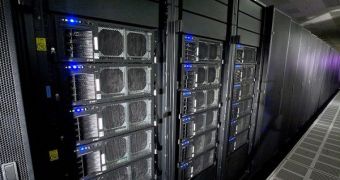Scientists at the US Department Of Energy's (DOE) Los Alamos National Laboratory have recently started running their model of the unseen Universe on the world's fastest supercomputer, the IBM Roadrunner. The team that manages the simulation is part of the Nuclear and Particle Physics, Astrophysics and Cosmology group, and it is led by investigator Salman Habib. The reason why this computer had to be used for the job was the fact that it was the fastest petaflop-scale computer in the world, which made it extremely suitable for such complex tasks as modeling the unseen Universe.
“Because the universe is expanding and at the same time accelerating, either there is a huge gap in our understanding of physics, or there is a strange new form of matter that dominates the universe – dark energy – making up about 70 percent of it. In addition, there is five times more of an unknown 'dark matter' than there is ordinary matter in the universe, and we know it's there from many different observations, most spectacularly, we've seen it bend light in pictures from the Hubble Space Telescope, but its origin is also not understood,” Habib says of the new models.
The expert believes that grasping the way dark energy functions and is distributed across the Universe may hold the key to understanding what its structure and composition actually are. The fact that even looking at a small portion of the visible Universe requires a petascale computer is a clear indicator of the complexity that outer space holds, especially in terms of the interactions that occur between galaxies, planets and their suns, black holes, stars, radiation, gas and dust.
“We are trying to really understand how to more completely and more accurately describe the observable universe, so we can help in the design of future experiments and interpret observations from ongoing observations like the Sloan Digital Sky Survey-III. We are particularly interested in the Large Synoptic Survey Telescope (LSST) in Chile, in which LANL is an institutional member, and DOE and NASA's Joint Dark Energy Mission (JDEM). To do the science in any sort of reasonable amount of time requires a petascale machine at the least,” Habib adds.
“Our effort is aimed at pushing the current state of the art by three orders of magnitude in terms of computational and scientific throughput. I'm confident the final database created by Roadrunner will be an essential component of dark universe science for years to come,” he concludes. The supercomputer is capable of performing no less than one million billion calculations per second, which is equivalent to the number 1 followed by 15 zeros. It sports a unique, hybrid design, with each of the computational nodes in this cluster consisting of two AMD Opteron™ dual-core processors, in addition to four PowerXCell 8i™ processors.

 14 DAY TRIAL //
14 DAY TRIAL //